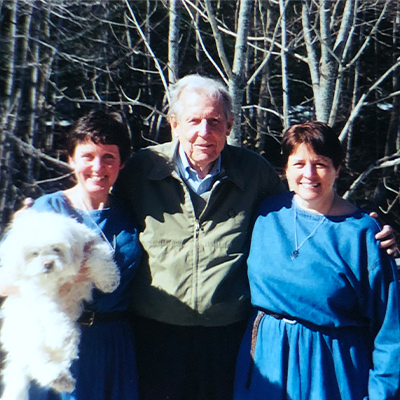
Sr Gail, Fr Thomas, Sr Bernadette
When we began our founding in 1999 with Thomas Berry, together we pondered a name that would locate our mission within the sacred community of life ~ and decided upon the name Sisters of the Earth Community.
This name flowed from our many conversations with Thomas during our early founding years summed up in these words from his reflections in Befriending the Earth:
I spoke recently to some 300 members of various Catholic mission associations, and mentioned that we can no longer have missions simply to humans, whether they be political, economic or religious. We cannot aim our efforts precisely, and certainly not exclusively, to the human community, because the human is an abstraction if this designation is taken in isolation from its larger context.
There is no such thing as “human community” without earth, soil, air , water and all living forms. Without these, humans do not exist. There is, therefore no separate human community. Humans are woven into this larger community, which is the Sacred Earth Community.

Bioregionally
While Sisters of the Earth Community is our global name, bioregionally we are known as sisters of the Green Mountains or Green Mountain Monastery, located in the northeast kingdom of Vermont, USA in a beautiful bioregion characterized by farms, boreal forests, streams, lakes, balsam fir, spruce and maple trees, bear, moose, bobcat and coyotes.
In the chapter entitled “Bioregions: Context for Re-inhabiting the Earth” in The Dream of the Earth , Thomas Berry writes:
The planet presents itself to us, not as a uniform global reality, but as a complex of highly differentiated regions caught up in the comprehensive unity of the planet itself.
There are arctic and tropical, coastal and inland regions, mountains and plains, river valleys and deserts. Each of these regions has its distinctive geological formation, climatic conditions and living forms. Together these constitute the wide variety of life communities that may be referred to as bioregions.
The challenge for us as humans is to join the Earth Community as participating members, to foster the progress and prosperity of the bioregional communities to which we belong.